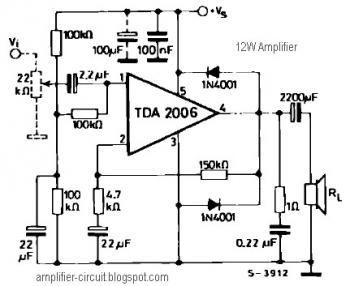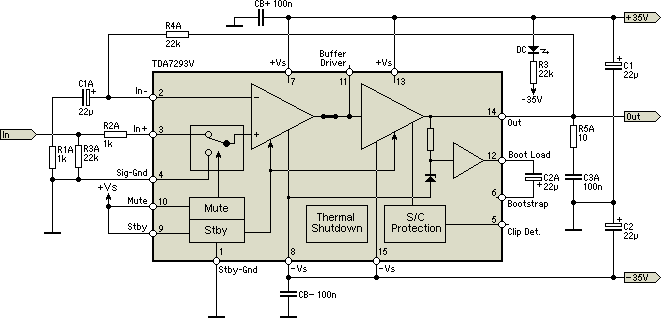
FET Audio Mixer

This circuit combines two or more audio channels into a single channel (for example, mixing stereo into mono). The design allows for the addition of multiple channels, consuming minimal power. Although the schematic illustrates two inputs, it is possible to increase the number of inputs by duplicating the clearly defined sections of the circuit. One variant of this mixer was reported to accommodate up to 25 inputs.
This audio mixer circuit operates using a simple configuration that allows for the integration of multiple audio sources into a single output. The fundamental principle involves summing the input signals while maintaining their integrity and minimizing distortion. The circuit typically comprises operational amplifiers (op-amps) configured as summing amplifiers, which provide the necessary gain and mixing capabilities.
In the basic design, each input channel is fed into the inverting terminal of an op-amp through individual resistors. The values of these resistors are crucial as they determine the mixing ratio of each channel. By selecting appropriate resistor values, one can achieve a balanced mix, ensuring that no single input dominates the output. The non-inverting terminal of the op-amp is usually connected to ground, providing a stable reference point.
For configurations requiring additional inputs, the circuit can be expanded by replicating the input sections, each comprising an op-amp and associated resistors. This modular approach not only simplifies the design process but also allows for scalability based on specific application needs. The output of the mixer can be taken directly from the op-amp's output pin, which delivers a combined audio signal.
Power consumption is a critical factor in audio applications, and this circuit is designed to operate efficiently with low power requirements. This feature makes it suitable for battery-operated devices or applications where power conservation is essential.
In summary, this audio mixer circuit is versatile and efficient, accommodating various input configurations while maintaining high audio quality. Its design simplicity and low power consumption make it an ideal choice for numerous audio mixing applications, ranging from basic stereo to complex multi-channel setups.This simple circuit mixes two or more channels into one channel (eg. stereo into mono). The circuit can mix as many or as few channels as you like and consumes very little power. The mixer is shown with two inputs, but you can add as many as you want by just duplicating the "sections" which are clearly visible on the schematic. 1. As many or as fe w channels as are required can be added to the mixer. Do this by just duplicating the input "sections" which are clearly shown on the schematic. One version of this mixer I saw had 25 inputs! 🔗 External reference
This audio mixer circuit operates using a simple configuration that allows for the integration of multiple audio sources into a single output. The fundamental principle involves summing the input signals while maintaining their integrity and minimizing distortion. The circuit typically comprises operational amplifiers (op-amps) configured as summing amplifiers, which provide the necessary gain and mixing capabilities.
In the basic design, each input channel is fed into the inverting terminal of an op-amp through individual resistors. The values of these resistors are crucial as they determine the mixing ratio of each channel. By selecting appropriate resistor values, one can achieve a balanced mix, ensuring that no single input dominates the output. The non-inverting terminal of the op-amp is usually connected to ground, providing a stable reference point.
For configurations requiring additional inputs, the circuit can be expanded by replicating the input sections, each comprising an op-amp and associated resistors. This modular approach not only simplifies the design process but also allows for scalability based on specific application needs. The output of the mixer can be taken directly from the op-amp's output pin, which delivers a combined audio signal.
Power consumption is a critical factor in audio applications, and this circuit is designed to operate efficiently with low power requirements. This feature makes it suitable for battery-operated devices or applications where power conservation is essential.
In summary, this audio mixer circuit is versatile and efficient, accommodating various input configurations while maintaining high audio quality. Its design simplicity and low power consumption make it an ideal choice for numerous audio mixing applications, ranging from basic stereo to complex multi-channel setups.This simple circuit mixes two or more channels into one channel (eg. stereo into mono). The circuit can mix as many or as few channels as you like and consumes very little power. The mixer is shown with two inputs, but you can add as many as you want by just duplicating the "sections" which are clearly visible on the schematic. 1. As many or as fe w channels as are required can be added to the mixer. Do this by just duplicating the input "sections" which are clearly shown on the schematic. One version of this mixer I saw had 25 inputs! 🔗 External reference





